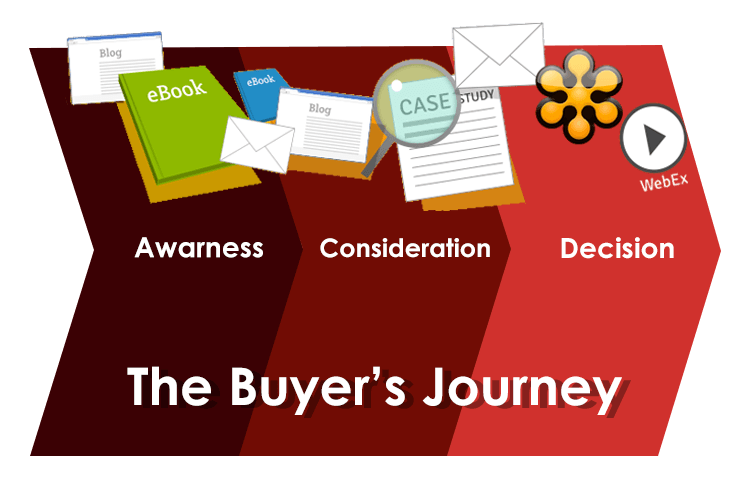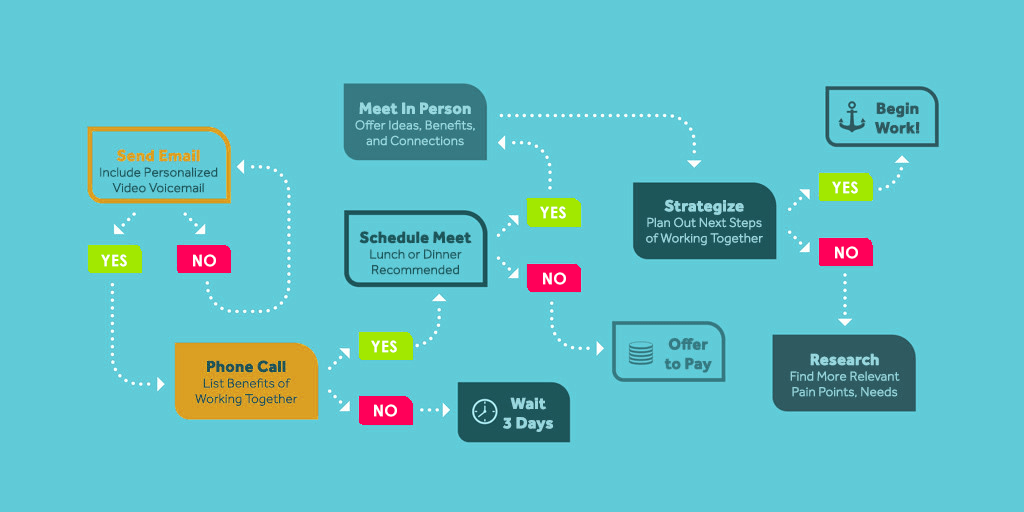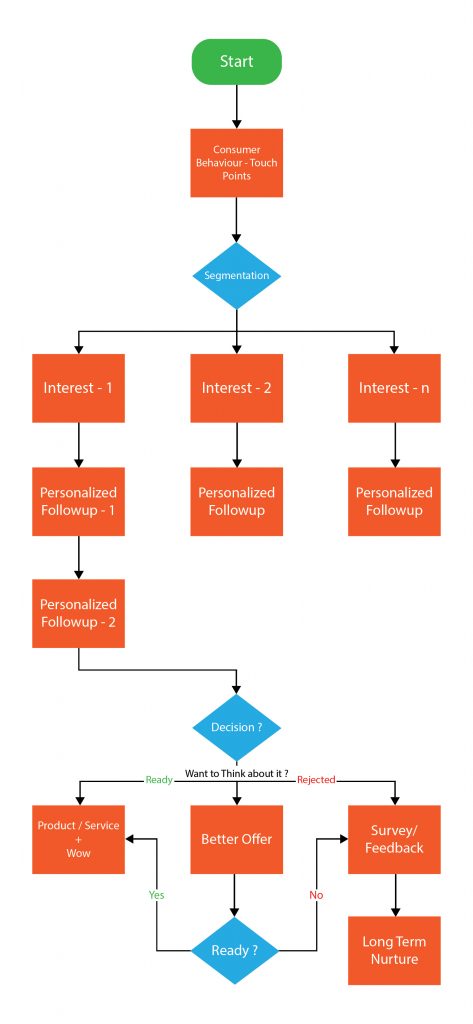6 Ways Workflow Automation Will Improve Your Lead Nurturing ROI
Staying competitive in today’s dynamic world is becoming increasingly challenging, especially for small to medium businesses. The number of possible lead nurturing touchpoints (where consumers can interact with the brand) has increased beyond imagination.
For instance,
- consumers can call the helpline,
- interact with automated chatbots,
- contact business support teams,
- Lead nurturing over social platforms, and
- possibly fill up some inquiry or feedback forms
It is with this context, the idea of lead capturing and lead nurturing can be well understood. The process of engaging with the leads in a personalized (or targeted) way by providing highly relevant and contextual information at each touchpoint of the consumer buyer’s journey can be termed as lead nurturing. The intention is to provide enough value so that the lead can make a purchasing decision in the end possibly in favour of our business.

Marketers have to make sure they treat each prospect with due consideration irrespective of their source. To overcome the challenge of keeping a track of all leads and engaging with them in a personalized manner, organizations invest in CRM and marketing automation tools like Infusionsoft, HubSpot or others.
These Marketing Automation tools play an integral role in managing leads and enhancing the engagement abilities of the marketers with the leads.
What is the most effective lead nurturing method?
Now, let’s look into several automated lead nurturing strategies that can possibly boost your ROI.
1. The Art of Segmentation
The first step and more importantly the most effective lead nurturing strategy for maximizing ROI is to segment the prospect in a meaningful manner. Segmentation will help classify the prospect as per the personas which will determine the method through which the client needs to be pursued. Although it’s not always possible to segment in an automated manner, you can deploy some of the below lead nurturing techniques for automation:
- In tools like Infusionsoft, you can TAG a prospect based on his website behaviour. For example, if the visitor has spent considerable time and action on a particular service page, it might indicate a preferred interest area
- For web-forms, we can add an extra field to segment the visitor based on their interest.
Expected Outcome – A prospect list which is segmented based on their interests, behaviour or geographies.
2. Timely Follow-Ups
The second important step is to ensure the prospects are followed-up in a highly personalized and timely fashion. This is where marketing automation yields the best results for lead nurturing. The idea is to create an automated machine (as Ryan Deiss call it) so that you can focus on other value-added activities. The medium of follow-up can be any, email, SMS, or push notification. Some of the examples of timely automated follow-ups
- A sequence of three nurture emails (Download – Gain-Logic-Fear template) to request the user to purchase your initial offer
- Abandonment Cart Email Sequence say within three hours after the user abandoning the cart
- Drip series on a successful sign-up to educate the user about your product
The best part about marketing automation tools is that you can structure your follow-ups based on IF-ELSE logic. If X happens, then send Y email/SMS, or if Z happens, then send T Email/SMS. Expected Outcome – A highly targeted lead nurturing email campaign set-up in your own marketing automation tool.

3. Automating the Consumer Journey

Consumer journey refers to step-by-step activities (or touchpoints) a consumer goes through in the entire lifetime with the brand. Through automation, you can stay ahead of the curve and literally chart out the funnel (or steps) through which you want the consumers to move, before or after their purchase. For example,
- Customer is driven to a landing page from a Facebook Ad -> Prompted to download the e-book -> the ones who have downloaded are requested to attend a webinar -> Ones who have attended a webinar are nurtured to undergo a free trial of your product -> Nurture to purchase paid version of software ->nurture the lead to purchase any top-ups (upsell) for the product -> Request feedback, and if feedback is positive, request to refer friends, provide reviews and ratings.
Having a well – constructed representation of the consumer journey (also known as a funnel) which is specific to your business is helpful in optimizing your marketing strategy.
4. Lead Scoring
The next strategy is to assign scores based on user behaviour and engagement. The idea is to devise a meaningful point-based system (or lead scoring) that can be useful for prioritizing the follow-up with your prospects. You should think through your own lead scoring formula and then implement in preferred marketing automation tool. An activity indicating a higher level of interest in your products or services should get more points. Also note, it is also important to keep analyzing the formula and not be afraid of refining it as you go.
This procedure is effective in prioritizing the leads that need to be targeted first. For instance, if the lead is marked as cold, then they would need more engagement with your lead nurturing team. On the other hand, if the lead is marked as hot then they are ready to close the deal and should be approached by the sales team immediately. Expected Outcome – Your prospects are assigned leads cores which in turn will help you segment them as Hot, Warm or Cold.

5. Loyalty through delight
It is an indomitable fact that the most powerful form of marketing is from the word of mouth. And this only comes through loyal customers who have been extremely satisfied with your product or services. With the help of CRM, businesses can collect personalized information of their client and use that to create personalized WOW lead nurturing sequence for their customers.
Now, who doesn’t love personalized experiences designed just for them? Off course this goes without saying that delighted customers turn into a loyal customer and customer loyalty goes a long way into increasing the ROI for your business
6. Analysis and Optimization
Any marketer knows that analysis plays an integral role in the framework of any marketing strategy’s success. Analytical marketing automation tools help marketers quantify the success and failure of their marketing techniques.
As you all know that there is no certainty of success while implementing a marketing strategy. However, with continuous analysis of any marketing strategy, marketers can determine the parts of the strategy which are succeeding or failing.
Once the above-mentioned points are ascertained then strategy needs to be optimized accordingly, thus increasing the probability of its success.
To sum things up it has been made extremely clear how crucial a role marketing automation tools play in the success of a business. From automating client communication to optimizing your marketing funnel, Marketers need to embrace lead nurturing for their business wholly and solely.